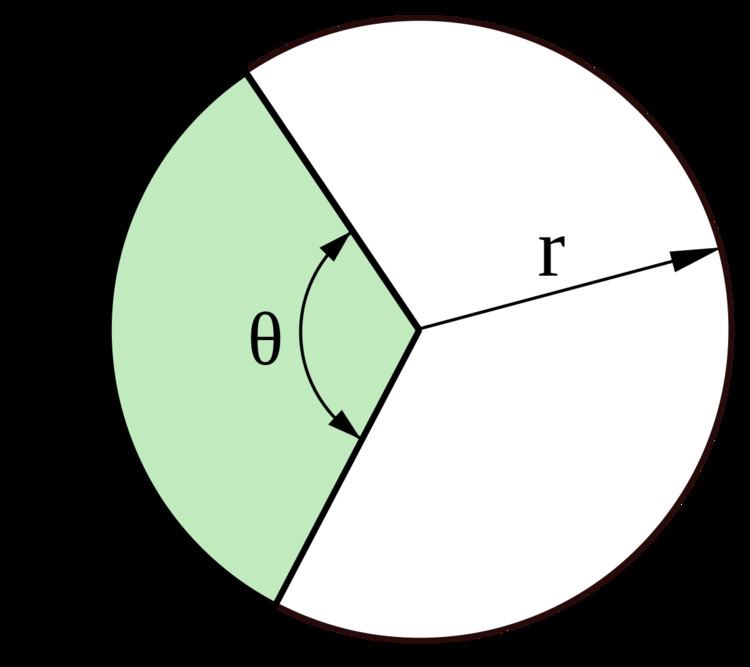 | ||
A circular sector or circle sector (symbol: ⌔), is the portion of a disk enclosed by two radii and an arc, where the smaller area is known as the minor sector and the larger being the major sector. In the diagram, θ is the central angle in radians,
Contents
A sector with the central angle of 180° is called a half-disk and is bounded by a diameter and a semicircle. Sectors with other central angles are sometimes given special names, these include quadrants (90°), sextants (60°) and octants (45°), which come from the sector being one 4th or 6th or 8th part of a full circle, respectively.
The angle formed by connecting the endpoints of the arc to any point on the circumference that is not in the sector is equal to half the central angle.
Area
The total area of a circle is πr2. The area of the sector can be obtained by multiplying the circle's area by the ratio of the angle and 2π (because the area of the sector is proportional to its angle, and 2π is the angle for the whole circle, in radians):
The area of a sector in terms of L can be obtained by multiplying the total area πr2 by the ratio of L to the total perimeter 2πr.
Another approach is to consider this area as the result of the following integral :
Converting the central angle into degrees gives
Arc length
The length L of the arc of a sector is given by
where θ is in radians.
If the angle is given in degrees, then
Perimeter
The length of the perimeter of a sector is the sum of the arc length and the two radii:
where θ is in radians.
